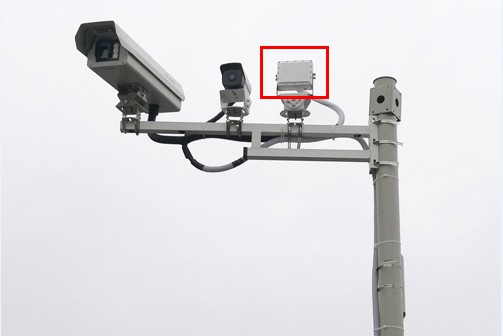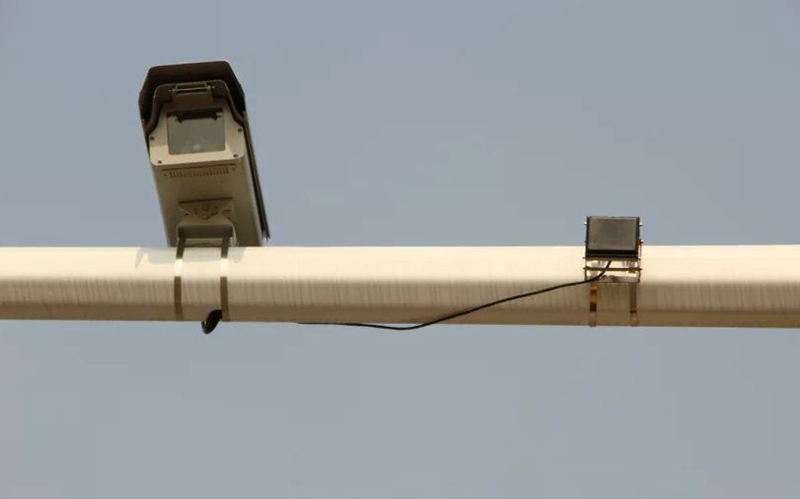Traffic speed radar: the precise “eagle eye” of traffic enforcement
In modern transportation systems, maintaining traffic order and ensuring road safety are crucial. Traffic speed radar, with its unique technological advantages, has become an indispensable tool for traffic enforcement. It can accurately monitor vehicle speed, effectively curb illegal activities such as speeding, and play a crucial role in reducing the incidence of traffic accidents and ensuring the safety of people’s lives and property. This research report aims to explore the core working principle of traffic speed radar, trace its development history, analyze how it achieves precise enforcement, and comprehensively analyze its specific role in traffic enforcement practice, in order to provide solid theoretical and practical support for traffic management departments to formulate scientific and reasonable traffic management strategies.
1、 The working principle of traffic speed radar
Traffic speed radar mainly relies on the Doppler effect to achieve speed measurement function. When the electromagnetic waves emitted by the radar encounter a moving target (such as a moving vehicle), the frequency of the reflected waves will change. This frequency variation is directly related to the relative velocity between the target and the radar. Specifically, if the target moves towards the radar, the frequency of the reflected wave increases; If the target deviates from the radar motion, the frequency of the reflected wave decreases. By accurately measuring the frequency difference between the transmitted wave and the reflected wave, combined with known parameters such as electromagnetic wave propagation speed, specific mathematical formulas can be used to calculate the target’s velocity relative to the radar.
After receiving the reflected signal, the signal processing unit in the radar system begins frequency analysis of the transmitted and reflected waves. By using complex signal processing algorithms, accurately extract the frequency difference information between the two. Then, based on the principle formula of the Doppler effect, the frequency difference is converted into velocity values. This calculation process involves a comprehensive consideration of various factors such as electromagnetic wave propagation characteristics, frequency measurement accuracy, and target motion state. In order to improve the accuracy of speed calculation, modern traffic speed radar usually adopts advanced digital signal processing technology to filter, amplify, sample and analyze the signal, effectively reducing noise interference and measurement errors, thus achieving high-precision speed measurement.
2、 The Development History of Traffic Speed Radar
Traffic radar technology has gone through three significant stages of development. In the initial stage of pure speed measurement, the main function of radar is only to measure the speed of vehicles and provide speed data of speeding vehicles for traffic enforcement. With the further increase in demand for traffic management, we have entered the stage of speed and distance measurement. At this stage, radar can not only measure the speed of vehicles, but also measure the distance between vehicles and radar equipment, which provides possibilities for applications such as traffic flow monitoring and vehicle positioning. In the stage of speed measurement, distance measurement, and angle measurement, radar technology becomes more sophisticated and can simultaneously obtain the speed, distance, and angle information of the target, achieving accurate perception of the vehicle’s motion status in all directions. The ability to obtain multidimensional information makes the application of traffic radar in intelligent transportation systems more extensive, such as playing an important role in vehicle trajectory tracking, traffic scene modeling, and so on.
In the development process of traffic speed radar, different types of radar detectors have also emerged. Full frequency radar detectors were once popular, as they were able to detect radar signals from multiple frequency bands and provide drivers with certain warning information. However, with the continuous upgrading of traffic enforcement technology, its limitations are gradually becoming apparent. Subsequently, GPS radar detectors appeared, which used GPS positioning technology and pre stored fixed speed measurement point information to provide drivers with more accurate warnings. But this type of detector also has problems such as delayed database updates. In recent years, with the rapid development of technology, new types of radar detectors have emerged, such as those using advanced signal processing algorithms, detectors with higher sensitivity and anti-interference capabilities, and multifunctional detectors deeply integrated with other in vehicle intelligent systems. While improving drivers’ perception of speed radar, they also encourage traffic enforcement departments to continuously optimize speed measurement technology and enforcement strategies, forming a development trend of mutual promotion and continuous evolution of technology.


3、 How to achieve precise enforcement with traffic speed radar
High precision speed radar plays a crucial role in traffic checkpoint scenarios. These radars typically use advanced microwave technology, with high frequency stability and narrow beam characteristics. The microwave signal emitted by it can accurately cover the checkpoint area and measure the speed of passing vehicles quickly and accurately. For example, the speed measurement error of some high-precision speed measuring radars can be controlled within a very small range, which can meet the strict requirements of traffic enforcement for speed measurement accuracy. At the same time, the speed radar at the checkpoint is often linked with high-definition cameras and other devices. When the radar detects speeding vehicles, it immediately triggers the camera to take photos or videos of the vehicle, recording the illegal evidence of the vehicle, including detailed information such as the appearance of the vehicle, license plate number, driving speed, and illegal time, thus achieving precise enforcement and providing strong basis for traffic violation handling.
The core principle of radar speed measurement and photography is based on the organic combination of Doppler effect and image acquisition technology. When the radar detects a vehicle speeding, it will send a trigger signal to the relevant control unit. At the same time, cameras installed in specific locations quickly activate to take photos or record videos of the target vehicle. The camera’s shooting angle, focal length, and other parameters have been carefully designed and adjusted to ensure clear capture of key information about the vehicle. During the shooting process, the image data is synchronized and integrated with the speed data measured by the radar to form a complete illegal record. This integrated working mode enables the radar speed measurement and photography system to efficiently and accurately record speeding violations, providing an intuitive and reliable evidence chain for traffic enforcement, greatly improving the fairness and accuracy of traffic violation handling.
4、 The role of traffic speed radar in traffic enforcement
The primary function of traffic speed radar is to accurately measure the speed of vehicles and capture speeding violations in a timely manner. On various roads, whether they are highways, urban expressways, or ordinary city roads, speed radar is like a vigilant “eagle eye”, constantly monitoring the speed of passing vehicles. Once the vehicle speed exceeds the legal speed limit, the radar quickly activates the capture system to record the moment of the vehicle’s violation. These captured photos or video materials contain detailed information about the vehicle, such as license plate number, model, body color, as well as the time and location of the violation, providing conclusive evidence for traffic enforcement agencies to punish speeding violations. In this way, traffic speed radar effectively constrains the behavior of drivers, prompting them to comply with traffic regulations and drive at the prescribed speed, thereby reducing the risk of traffic accidents caused by speeding and ensuring the safety and smoothness of roads.
In addition to vehicle speed measurement and capture, traffic speed radar is also an important tool for traffic flow monitoring. It can monitor real-time information such as vehicle flow, speed distribution, and vehicle spacing on the road. By continuously collecting and analyzing this data, traffic management departments can have a comprehensive understanding of the traffic operation status of roads. For example, in urban transportation planning, the traffic flow data collected by traffic speed radar can be used to evaluate the carrying capacity of existing roads, identify traffic bottleneck sections, and provide scientific basis for the construction, expansion, or renovation of roads. In daily traffic management, based on traffic flow monitoring data, the timing scheme of traffic signals can be adjusted in a timely manner, optimizing the organization of traffic flow and improving the efficiency of road traffic. In addition, traffic flow monitoring data is of great significance for emergency response to unexpected events. In the event of traffic accidents, road construction, or other emergencies, by analyzing the changes in traffic flow on surrounding roads, reasonable traffic diversion plans can be quickly formulated to guide vehicles to detour, reduce the spread of traffic congestion, and ensure the normal operation of urban traffic.
Traffic speed radar is an indispensable and important component of intelligent transportation systems. In intelligent transportation systems, speed radar works in conjunction with various other traffic monitoring devices, communication technologies, and information processing systems. The vehicle speed, traffic flow and other data collected by it are transmitted to the big data platform of the traffic management center through a communication network, and are fused and analyzed with data from other sources such as road sensor data, video surveillance data, etc. Based on these comprehensive data, intelligent transportation systems can achieve intelligent optimization control of traffic signals, prediction and guidance of traffic congestion, rapid response and handling of traffic accidents, and other functions. For example, by analyzing speed radar data and video surveillance data, it is possible to determine in real-time whether a traffic accident has occurred on the road and dispatch rescue vehicles to the scene in a timely manner, reducing the losses caused by accidents and the impact of traffic congestion. At the same time, intelligent transportation systems can also provide real-time traffic navigation services for drivers based on the traffic flow information provided by speed sensors, guiding vehicles to choose the optimal driving route and improving the operational efficiency and intelligence level of the entire urban transportation network.
